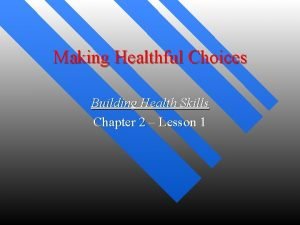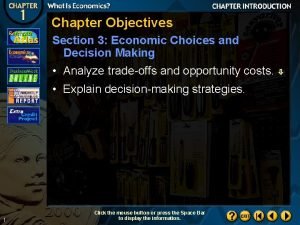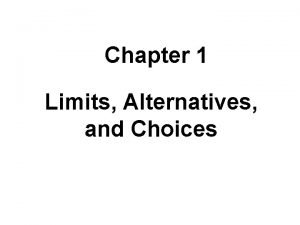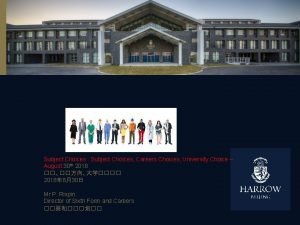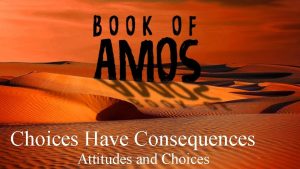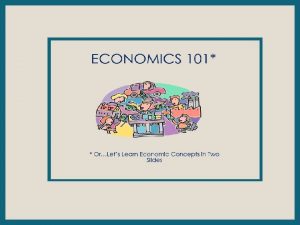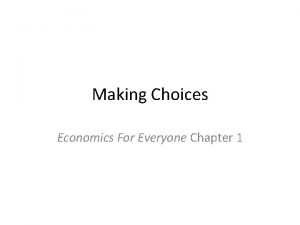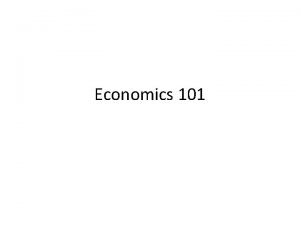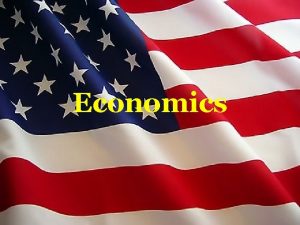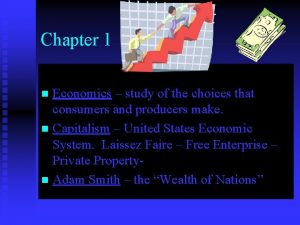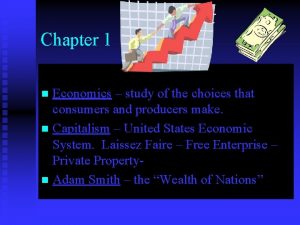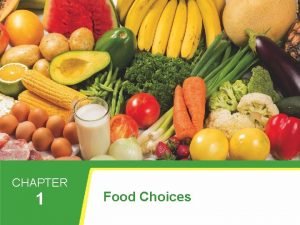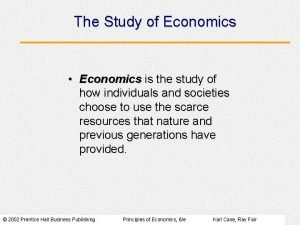Chapter 1 Economics study of the choices that


















- Slides: 18

Chapter 1 Economics – study of the choices that consumers and producers make. n Capitalism – United States Economic System. Laissez Faire – Free Enterprise – Private Propertyn Adam Smith – the “Wealth of Nations” n

4 factors of Production n n Human Resources Capital Resources Natural Resources Entrepreneurship

Scarcity n The Fundamental Economic Problem n Unlimited needs and wants with limited resources = scarcity which leads to choices for producers.

What to Produce? n How to Produce? n For whom to Produce for? n

Trade Offs and Opportunity Costs n n n Alternatives –giving up one thing for the use of another The next best alternative Example – what value does a person lose if they decide to do one thing versus the other

The Production Possibilities Frontier - PPC tanks sailboats

PPC continued … Trade offs and opportunity costs n The costs of idle resources? n Economic growth n As a entrepreneur – you must decide which product is in more demand concentrate your production efforts on the item in more demand by the public. n

Forms of exchange n n n Barter - trade – ancient societies Money – measure of value Credit – borrowed money

Chapter 2 Economic Systems

Traditional Economy n n n Based on custom and tradition Products produced and distributed among the groups Only items that are necessary are produced n Rarely used today

Command Economy n n n Government officials make decisions Planned economies Ancient system – not seen today

Market Economies Individuals hold control and answer the three basic economic questions n Self-interest n System is set up to reward people – incentives exist n

Mixed Economies n n Authoritarian / Communism – government controls all factors of production Example – U. S. S. R. Capitalism – government involvement is limited Example – U. S. A. n n Democratic Socialism – government ownership is limited to key industries Example - Canada

Five features of the U. S. Free Enterprise System n n n Free enterprise – an economic system in which business can be conducted freely with limited gov. involvement. Private property – people have the right to own private property and enter into contracts. Engage in economic competition! Make decisions based on self-interest! Participate in the economy with limited government involvement!

Circular Flow Model Types of exchanges : Households and Government -households provide resources to the government for income -households pay taxes to the government for services Households and Businesses -households provide resources to businesses for income -households pay businesses for products

Circular Flow Model Cont. n Businesses and Government u -businesses provide products to the government for money u -businesses pay taxes to the government for service

Key terms : Utility - usefulness of a product - The utility of a certain good can vary from person to person. n Self – sufficiency – when you can fulfill all your needs with no outside influence n Interdependence – when one area or region is affected because of the events and incidences that occurred in another region. n

Key Terms cont. Productivity – level of output that results from a given level of input n Efficiency – the use of the smallest amount of resources to produce the greatest amount of output n Division of labor – assigning a small number of tasks to each worker n Specialization – the focus on one activity n
 Phân độ lown
Phân độ lown Block av độ 2
Block av độ 2 Thể thơ truyền thống
Thể thơ truyền thống Thơ thất ngôn tứ tuyệt đường luật
Thơ thất ngôn tứ tuyệt đường luật Walmart thất bại ở nhật
Walmart thất bại ở nhật Tìm độ lớn thật của tam giác abc
Tìm độ lớn thật của tam giác abc Con hãy đưa tay khi thấy người vấp ngã
Con hãy đưa tay khi thấy người vấp ngã Tôn thất thuyết là ai
Tôn thất thuyết là ai Gây tê cơ vuông thắt lưng
Gây tê cơ vuông thắt lưng Sau thất bại ở hồ điển triệt
Sau thất bại ở hồ điển triệt Lesson 2 our economic choices
Lesson 2 our economic choices The study of choices
The study of choices School of business and economics maastricht
School of business and economics maastricht Non mathematical economics
Non mathematical economics Lesson 2 making responsible decisions and setting goals
Lesson 2 making responsible decisions and setting goals When making smart food choices what question
When making smart food choices what question How your choices affect income
How your choices affect income Chapter 1 section 3 economic choices and decision making
Chapter 1 section 3 economic choices and decision making Economizing problem definition
Economizing problem definition














